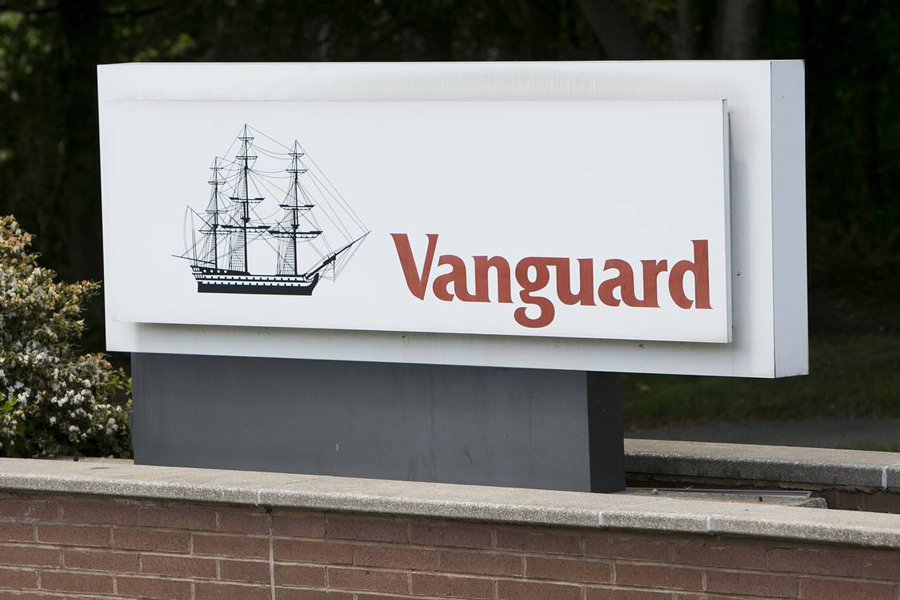

A seemingly unstoppable flood of money has Vanguard Group Inc. on the brink of claiming a crown that State Street Corp. has held for decades.
Nearly $18 billion has flowed into Vanguard’s S&P 500 ETF (ticker VOO) in the opening days of 2025 — more than five times the amount attracted by the closest runner-up — after breaking the record for annual inflows last year with a $116 billion haul, data compiled by Bloomberg show. Assets in the fund have ballooned to $626 billion, putting it on the cusp of eclipsing the $637 billion SPDR S&P 500 ETF Trust (SPY) — currently the world’s largest ETF.
VOO’s draw highlights the Valley Forge, Pennsylvania-based company’s core audience: cost-conscious financial advisers and retail investors, whose long-term investment horizons typically produce steady inflows and rare withdrawals. Vanguard’s rock-bottom fees have won a loyal following amid the buy-and-hold crowd, given that the firm’s unique corporate structure — fund shareholders elect its board members — means that its products charge relatively little.
“Generally speaking, VOO won the fight for retail assets,” said Bloomberg Intelligence senior ETF analyst Eric Balchunas. “To me, VOO has the stickiest of sticky investors. These are diamond-hands that would make any crypto person blush.”
SPY, on the other hand, is prized among professional traders for its liquidity and razor-thin spreads. But the fund’s superior trading volume often translates into chunky two-way traffic in the fund. Case in point: VOO has never posted an annual net outflow since its 2010 inception, while SPY has seen net withdrawals in five years during the time period.
Additionally, VOO charges 0.03% on an annual basis, compared to SPY’s 0.095% fee. That cost efficiency has Vanguard enjoying “many different sources of flows,” according to Deborah Fuhr, co-founder of research firm ETFGI — including from model portfolios, in which funds are packaged together into ready-made strategies and sold to advisers.
“Throughout 2024 and continuing into early 2025, the market environment has been generally favorable to large-cap US equities, which has contributed to continued enthusiasm for S&P 500 ETFs,” Rodney Comegys, global head of Vanguard’s equity index group, said in a statement. “And as ETF model portfolios continue to gain traction with investors and advisors, allocations to broadly diversified, low-cost, highly liquid ETFs like VOO have continued to increase.”
Though VOO is in pole position to overtake SPY, industry giant BlackRock Inc. isn’t too far behind. The $610 billion iShares Core S&P 500 ETF (IVV) has also soared in size, absorbing nearly $87 billion last year alone. IVV’s fee currently matches that of VOO at 0.03% — but industry experts wager that could change.
“IVV’s asset base could also soon exceed SPY as it widely used. We also think BlackRock might become more aggressive in pricing IVV,” said Todd Rosenbluth, head of research at TMX VettaFi. “Being the king of the ETF market is worth fighting for.”

Canadian stocks are on a roll in 2025 as the country prepares to name a new Prime Minister.

Two C-level leaders reveal the new time-saving tools they've implemented and what advisors are doing with their newly freed-up hours.

The RIA led by Merrill Lynch veteran John Thiel is helping its advisors take part in the growing trend toward fee-based annuities.

Driven by robust transaction activity amid market turbulence and increased focus on billion-dollar plus targets, Echelon Partners expects another all-time high in 2025.

The looming threat of federal funding cuts to state and local governments has lawmakers weighing a levy that was phased out in 1981.
RIAs face rising regulatory pressure in 2025. Forward-looking firms are responding with embedded technology, not more paperwork.
As inheritances are set to reshape client portfolios and next-gen heirs demand digital-first experiences, firms are retooling their wealth tech stacks and succession models in real time.
